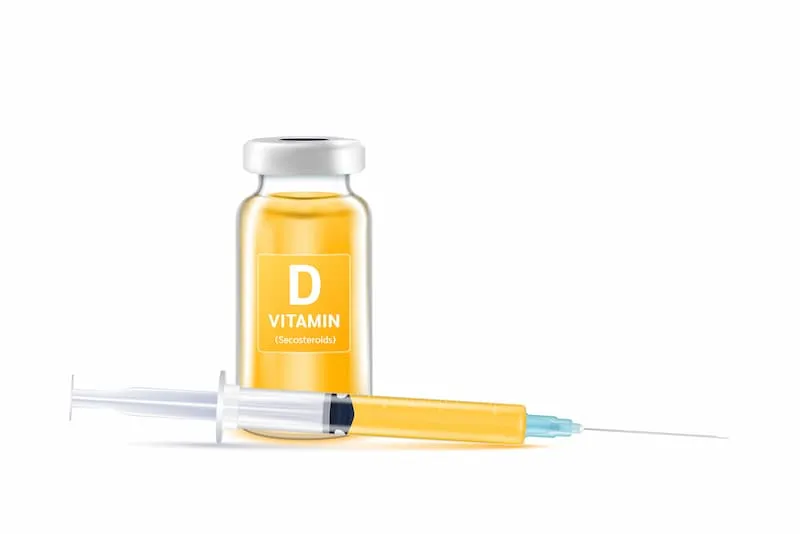
Benefits of Vitamin D3:
- Improved Bone Health
- Enhanced Immune Function
- Improved Mood
- Muscle Function
What is Vitamin D3?
A vitamin D3 booster shot involves injecting a concentrated dose of vitamin D3 (cholecalciferol) directly into the muscle.
Here’s why it’s used:
Vitamin D Deficiency: Vitamin D deficiency is a common health issue, especially in people with limited sun exposure, those with darker skin tones, and older adults.
Rapid Correction: Injections provide a rapid and effective way to increase vitamin D levels in the body, bypassing the digestive system.
Severe Deficiency: In cases of severe vitamin D deficiency, injections may be the preferred method of treatment.
How it works:
Intramuscular Injection: The vitamin D3 injection is typically administered intramuscularly, usually into the upper arm or buttock.
Rapid Absorption: The injection delivers a high dose of vitamin D directly into the bloodstream, allowing for quick absorption and utilization by the body.
Potential Benefits:
Improved Bone Health: Vitamin D plays a crucial role in calcium absorption and bone health, helping to prevent conditions like osteoporosis.
Enhanced Immune Function: Vitamin D supports a healthy immune system and may help protect against infections.
Improved Mood: Some studies suggest that vitamin D may play a role in mood regulation and may help to alleviate symptoms of depression.
Muscle Function: Vitamin D is important for muscle function and can help to improve muscle strength and reduce the risk of falls.
Important Considerations:
Medical Supervision: Vitamin D injections should only be administered by a qualified healthcare professional (such as a doctor or nurse).
Dosage: The appropriate dosage will vary depending on individual needs and vitamin D levels.
Monitoring: Regular blood tests may be necessary to monitor vitamin D levels and adjust dosage as needed.
Potential Side Effects: Mild side effects such as redness, swelling, or soreness at the injection site are possible but usually temporary.
Treatment step-by-step
Consultation & Assessment
-
- Medical History: You’ll have a consultation with a healthcare professional (doctor, nurse practitioner, or registered dietitian). They will review your medical history, including any existing medical conditions, medications, and allergies.
- Vitamin D Levels: Blood tests will be conducted to determine your current vitamin D levels.
- Dosage Determination: Based on your vitamin D levels and medical history, the healthcare professional will determine the appropriate dosage of vitamin D3 for your injection.
Injection Preparation
- Hand Hygiene: The healthcare professional will thoroughly wash their hands or wear sterile gloves.
- Prepare the Injection Site: The injection site (usually the upper arm or buttock) will be cleaned with an antiseptic solution.
- Prepare the Medication: The healthcare professional will prepare the vitamin D3 injection solution, ensuring proper dosage and sterility.
Injection Administration
- Needle Insertion: The healthcare professional will insert the needle into the muscle at the chosen injection site.
- Injection: The vitamin D3 solution will be slowly injected into the muscle.
- Needle Removal: The needle will be quickly removed, and gentle pressure will be applied to the injection site with a cotton ball or gauze.
Observation
Monitoring for Side Effects: The healthcare professional will observe the injection site for any signs of bleeding, swelling, or other complications.
Post-Injection Care
- Monitor for Side Effects: You should monitor the injection site for any redness, swelling, or discomfort.
- Report Side Effects: If you experience any unusual side effects, contact your healthcare provider immediately.
- Follow-up: You may need follow-up blood tests to monitor your vitamin D levels and adjust the dosage as needed.

